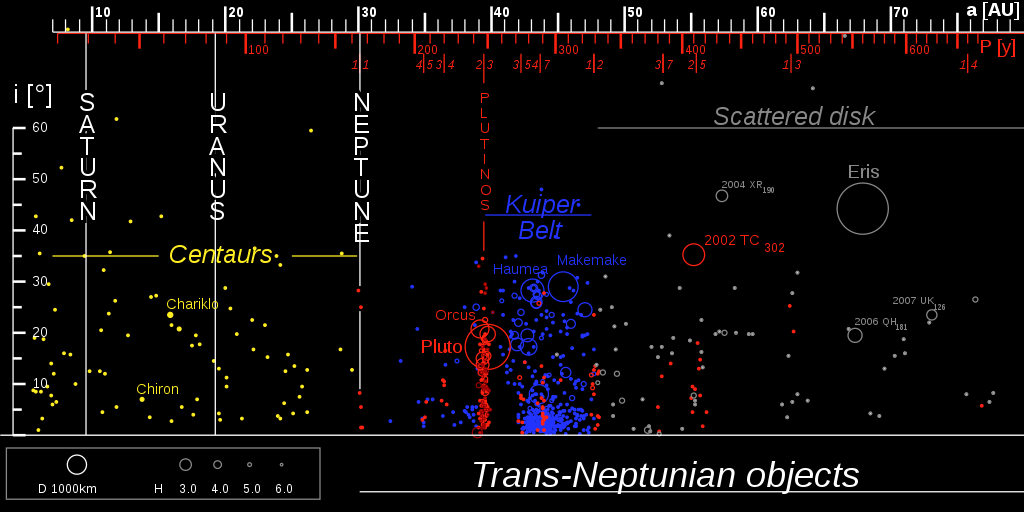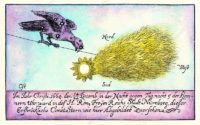Why Use Ceres? – The Generalized Titius-Bode Equation & Astrology

Some one you may have noticed that I use Ceres in all of my charts. Why is that? Most astrologers would not consider using it even though recently it has been promoted from asteroid to minor planet astronomically. This is the same status as Pluto, which is a minor planet. This all has to do with my personal theory of how astrology works.

Before I get into that, I want to explain that I do agree with the modern definition of a planet. It must orbit the Sun, it must have enough gravity to form a sphere, and it must have enough gravity to clear its orbit of other objects. A minor planet fills only the first two requirements, they do not clear their own orbit. Of course as astrologer, a minor planet is still a planet. If the Sun and Moon can be planets, then minor planets are planets too.
Now, how do I think astrology works? The general answer is by gravity, but that is a simplified explanation. I plan on given this a full separate article at a later date. I need to get my physics references right which requires significant amount research in advanced physics. But to give a sense of where this is going, remember science has already proven the Moon’s gravity affects the tides of Earth.
So how does the gravity make me consider that Ceres has is relevant to the chart more so that any other asteroid? First lets talk about a concept in astrology that most astrologers know. Each planet has its own energy to it, its own harmonic. This is a subjective statement for sure, but one that will find a lot of support among astrologers. Is there any thing in the solar system that shows this?
If fact there is. It is a typical of orbital resonance that was originally called the Titius-Bode Law. Formulated in 1766 by Johann Daniel Titius and popularized by Johann Elert Bode later on. This was formulated to
This formula fits the orbits in astronomical units (AU) for all of the classical planets. This was formulated before the discovery of Uranus, so once it was it was discover, Bode determined that it fit the model too and urged astronomers to find the planet in the gap space between Mars and Jupiter. This was quickly found with in 1801 where Ceres was discover. But at the same time, many other asteroids where discovered in the same general area including Vesta, Pallas, and Juno.

By the the discovery of Neptune, Ceres was demoted from planet to asteroid because too many other asteroids were discovered. When Neptune was discovered, its orbit did not fit the predicted model. Because of this the formula became discredited especially after Pluto was discovered. Two developments happened that has put new emphasis on this formulation. First, in the 1968 Stanley Dermott reformulated this to:
T(n) is the orbital period in days from the constants T(0) and C, which are specific to each each system. Dermott applied this mainly to the moon systems of Jupiter, Saturn, and Uranus. This is especially true of the Jupiter moon system, which is known by astronomers to be in a mean motion gravitational resonance for at least 3 of the 5 major moons.

While astronomers accepted Detmott’s formula was not thought to be universal for at least the next 40 years. What changed in that time is the discovery of planetary systems around other star systems. Since thousands of exosolar planets have been found it is now commonly accepted in the scientific community over 90% of all stars have planetary systems. With these discoveries it is now possible to see if this type of generalized Titius-Bode relationship is found outside the solar the system.
It turns out that known star systems with 4 or more planets, the generalized formula developed by Dermott works between 78% and 94% of the time. In fact scientist are now using this as a way to predict where undiscovered planets should be in these star system. It may be awhile before we get results this hypothesis, because most of the undetected planets are thought to small in size, earth size or smaller. Our current telescopes cannot detect planets that small yet.
Back to why this is important for astrology. First this shows the Titius-Bode relationship between the planets in our Solar System is not a fluke as previous scientist thought, but instead based on a local gravitational resonance that develops within each individual system. There are still some unknowns as to why this happens. It also shows that at certain orbits in a star system planets should exist, or if they don’t there is probably a asteroid belt.

This means that these orbit areas are where gravitational energy is stronger than in other parts of the solar system. Therefore if gravity is the mechanism which translates the power the planets to Earth, any large spherical body at these resonance orbits is more important astrologically than other planets or asteroids in the sky.
This is not to say that I don’t use the other main asteroids, because I will do occasionally in personal chart readings. However, Ceres should have primacy in the group and is the asteroid that has more meaning in the chart because it occupies a Titius-Bode resonance orbit.
Furthermore, Ceres comprises approximately 31% of the mass in the entire asteroid belt. The next closes asteroid, Vesta only have 8.6% of the mass. It is by far the planet is that has the most influence in the Asteroid Belt.

While Ceres doesn’t completely clear it’s orbit, it does have enough gravity to effect the region around 2.7 AU. One can clearly see how powerful Jupiter is as certain resonance orbits with Jupiter are cleared of asteroids. This is another example of how the resonance orbits form energy specific band that the effects of gravity are stronger than normal.
This theory also gives credence to still using Pluto as a planet in astrology. Like Ceres, Pluto is the largest object in the Kuiper Belt. It is also in a 2:3 mean motion orbital resonance with Neptune. This places it on the inner edge of the Kuiper Belt.

Now Eris is a little larger than Pluto, but Eris occupies a region of the Solar System call the Scattered Disk. In the diagram below, one can see that Pluto is within the dense region of the Kuiper Belt, a region between 40 AU and 50 AU. Eris is definitely the largest object in the Scattered Disk, but I am holding off on making a determination of which planets passed the the Kuiper Belt to use for right now, because the science of the region is evolving.
Another reason is that, many scientist think there is a proper planet in the distance solar system based on the orbital information of several distance minor planets. This is called the Planet Nine hypothesis. Not all scientist think the data points to this, but many do. I am waiting another few years for astronomers to get more information before proceeding before using Eris in my charts.

The conclusions here is that Ceres is is the largest minor planet in the Asteroid Belt and because it occupies an orbital resonance based on Titius-Bode relationship with the other planets, it needs to be included in astrology charts just like Pluto is. Both of these minor planets should be included in the chart for all types of astrology. This is why Ceres is all the mundane charts I place on the site.

Other major asteroids such as Vesta, Pallas, Juno, and Hygiea along with major Kepler objects, like Orcus, Haumea, and Makemake can be include in personal chart depending on the needs of the client. I do think these planets can be used well in personal charts, but more so for certain topics than as a general planet in the chart.


